This was published 5 years ago
ACCA raises the curtain on era of fear and fake news
The Theatre is Lying exhibition adopts the tricks of the stage.
By Sonia Harford
When a gallery advertises "an exhibition in five acts", it seems a disorienting mismatch. Yet at the Australian Centre for Contemporary Art, two curators who may or may not be frustrated directors are raising the curtain on the theatrics of art.
At a time when truth is stranger than fiction, ACCA commissioned six artists – five Australians and one from overseas – to create new work around "alternative narratives and worlds through illusionary, illusory, cinematic and theatrical devices".

Matthew Griffin, The outernet, 2018, production still. Credit: Matthew Griffin
So-called fake news and Matthew Griffin's digital collages on politics, reality television and the human body set the scene for one "act" – the rest of the "cast" explores sleight-of-hand techniques through film, performance and hall-of-mirrors perception-shifting.
Who to believe and what to trust are the unnerving questions posed by the wily and often witty exhibition, titled The Theatre is Lying.
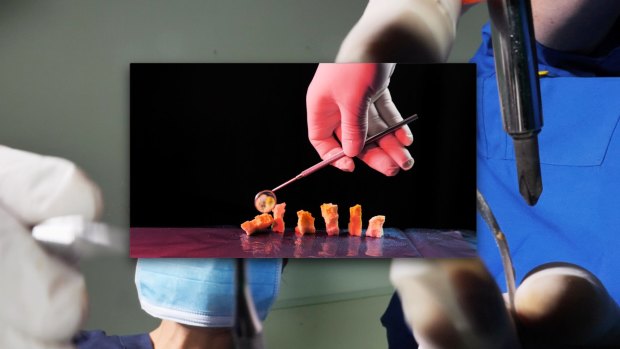
Matthew Griffin, Gums, 2018, production still. Credit: Matthew Griffin
Co-curator Annika Kristensen says the show came about in the context of thoughts that "circled around reality and the real and how do you think about this in the present moment when truth and fiction are increasingly blurring on the international stage and in media and politics.
"While this show isn't explicitly political it looks at the double meaning of the word theatre – as associated with performance or an arena for performance, and also the theatre of life or the world stage."
Kristensen and ACCA's artistic director, Max Delany, devised the exhibition as an overtly theatrical event. Faked images and espionage are all invoked in a sprawling web of influences, with nods to cultural greats such as George Orwell, Samuel Beckett and Maxwell Smart.
To give free rein to theatrical devices, Kristensen and Delany chose artists with skills beyond the studio – such as sound, film, set building or choreography.
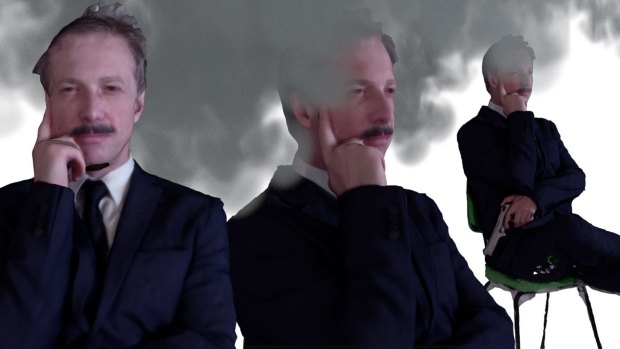
Daniel Jenatsch's The Sheraton Hotel Incident explores an embarrassing chapter in ASIO history.
"Increasingly those distinctions are less and less relevant, and we're looking at how they become murky," Kristensen says. "You see it in dance performances and people playing music and artists who build set designs."
Delany says theatricality was "once a dirty word in the visual arts. But in the past two decades visual arts has encompassed all kinds of media."
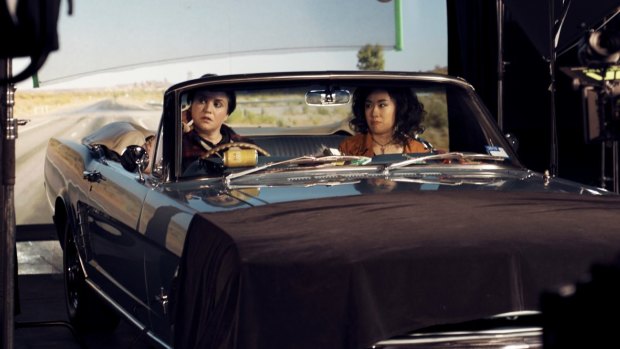
Nat Randall, left, with actor and artist Linda Chen in Randall and Anna Breckon's Rear View, 2018. Credit: DAVID R SEUMANUTAFA
The gallery, says Kristensen, "has always been seen as the white cube whereas the theatre has been the more immersive black box"? Why not let worlds collide?
One much-anticipated work is a new commission from Nat Randall and Anna Breckon. Few artists blur the lines between performance art, filmmaking and dramaturgy as thoroughly as the pair behind the recent astonishing performance work The Second Woman. In this exhausting live event, Randall performed for 24 hours, acting out a short scene with 100 different men, over and over.
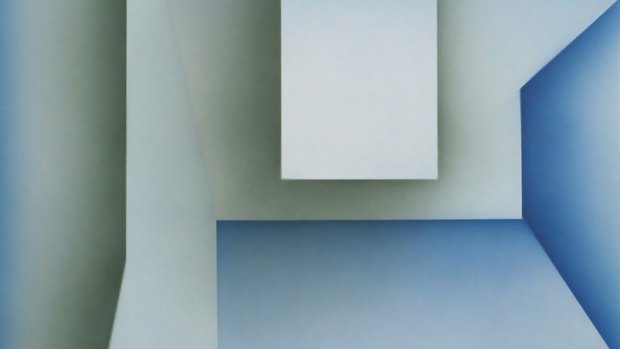
Consuelo Cavaniglia, Untitled (detail), 2017.
The endless loop of film or video art is a clear influence – and for the ACCA show Randall and Breckon create a subversive road movie, Rear View, presented as a long single take. A road trip from Broken Hill to Wilcannia is projected as two performers enact their own road movie, with all the expectations of that genre. They deliver a script entirely made up of lines from film scenes featuring women in cars.
Says Delany: "It's constructed speech between two women, one of ambiguous gender, and it's queering the roles of the road movie, so it's both familiar and strange."
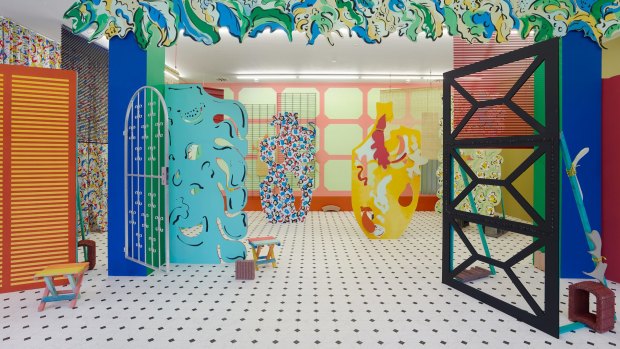
The installations of Venezuelan-born Sol Caleros evoke stage sets.
While many of the exhibition's works have the hallmarks we'd expect from five mid-career artists – the questioning, the serious sense of purpose, even a political edge – what could be the show-stopper is its sense of humour.
Some of the "acts" are funny, like spy stuff is funny, like a shoe-phone is funny. Or like tattooing your buttocks is funny.
The show's catalogue includes Griffin's hilarious account of his tattooed bum. How, the artist asks, could he get around his mum's opposition to his getting a tattoo? By inking an image of her, of course, on one of his buttocks. When his father got jealous, Griffin suggests, he had him tattooed on the other cheek.
Griffin has been called a punk artist, best known for creating savage digital collages on Instagram, mash-ups and videos lampooning American politicians and Australian figures such as columnist Andrew Bolt – to whom Griffin attached Monty Python-esque fake arms that wriggle out to cover his eyes.
In The Theatre is Lying, Griffin's four new video works explore the real and digital existence that now bedevils us all. It's personal and political and a bit baffling – with footage of his root canal operation, together with apparent CNN screen shots of interviewees who all have Griffin's face.
Artist and composer Daniel Jenatsch, meanwhile, uses the spy movie genre in a comment on truth being stranger than fiction. His video and sound work, The Sheraton Hotel Incident, references a 1983 mock training exercise that went horribly wrong for a group of ASIO agents. Wearing masks, weapons, and quite possibly shoe-phones, the agents set about "rescuing" a fictional hostage.
Problem was, the hotel hadn't been warned. Once staff began seeing sinister figures with weapons, police were called, the agents arrested and a scathing Royal Commission finding followed.
Delany suggests this critique of a bungled raid that was more Get Smart than James Bond is relevant to a 2018 audience attuned to surveillance and a "culture of fear" that potentially gives intelligence forces even greater powers.
Other works in the exhibition rely less on screen-based worlds, instead creating 3D installations or sculptural forms akin to set designs and props.
To Kristensen's mind, compared with visual art, "theatre and the performing arts … are much more transparent about the deception inherent to their craft.
"Scripts, sets, costumes, props, mise en scene, lighting, sound effects, smoke and mirrors … the theatre is lying, shamelessly."
Venezuelan-born, Berlin-based artist Sol Calero, visiting Melbourne for the first time following recent major shows in Europe, has created brightly coloured installations that evoke stage sets based around social spaces – a pretend day spa or travel agency – with a knowing wit behind the cultural cliches.
In some works, an audience is essential to fully realise the art. A person passes through a threshold under one of Calero's arches. This architectural feature, associated with the Spanish colonial empire, is pointedly answered by the vibrant colours she uses to play on a stereotypical view of Latin American heritage.
With so much deception on the line, a curator is probably wise to allude to the art world's biggest interrogation of all – authenticity.
In her catalogue essay, Kristensen writes that authenticity is often tied to originality or adherence to cultural or artistic traditions. Authentic might even be "a synonym for real". Yet she knows and we know that all art is in effect artifice; only ever a representation or one version of events – but a beautiful lie nonetheless.
The Theatre is Lying is at the Australian Centre for Contemporary Art, December 15 to March 24, 2019.